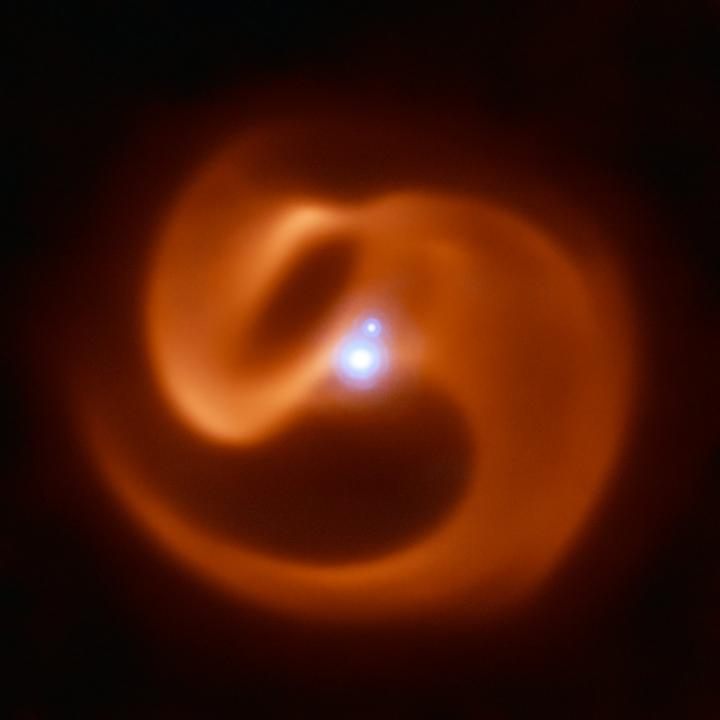See the Newly Found, Explosive Star System Named for an Egyptian Snake God
Apep has the right conditions for the biggest known explosion in the universe.

Eight thousand light-years from Earth, two stars are engaged in a cosmic dance that is generating winds of 7.5 million miles per hour and sending dust swirling in brilliant, crimson trails. The astronomers who discovered this star system have named it Apep, after the ancient Egyptian snake god and emissary of chaos. Based on the image and the science, it’s a fitting name.
The researchers, who published their findings today in the journal Nature Astronomy, first started tracking this unidentified, very bright object in 2012, and spent years pursuing a better view in order to classify it. After seeing it clearly for the first time using the European Southern Observatory’s Very Large Telescope in Chile, “I just gasped,” says Benjamin Pope, a NASA Sagan Fellow at New York University and one of the study’s authors. “Nothing looks like this.” He’s not exaggerating: If the astronomers’ measurements are correct, this is the first-known star system of its kind in the entire Milky Way. It’s beautiful and, despite being incomprehensibly distant, could actually pose a remote threat to Earth.
The extremely hot, extremely massive, extremely bright stars—known as Wolf-Rayets—that compose the system are rotating far more rapidly than they’ve been known to do in our galaxy, where various conditions tend to slow them down. Stranger still is that the dust, which is expanding outward at the relative snail’s pace of around a million miles per hour, seems to be immune to the solar wind being generated by the stars. “It was like finding a feather caught in a hurricane just drifting along at a walking pace,” said coauthor Peter Tuthill, of the University of Sydney, in a release.

The likeliest explanation for this discrepancy, writes Pope in an email, is a countervailing slow wind from the star system’s equator. These slow winds are actually signs of stress from the rapid rotation—and this means conditions are ripe for an explosion on a mind-boggling scale. In the case of rapidly rotating Wolf-Rayets, we’re talking about long-duration gamma-ray bursts (two seconds or more)—“the most powerful known explosions in the universe,” writes Pope, capable of peeling back ozone and wreaking havoc on the Earth’s climate, when the burst reaches us. Apep, the first local (in stellar terms) candidate for such a burst, he adds, could go off “tomorrow or in fifty thousand years.” Technically, it could have gone off already. Luckily, the snake god appears to be pointing away from us.
So there’s no immediate cause for worry, though you’d be forgiven for wondering what else is hidden out there, after bright Apep kept its explosive secret from us for so long.











Follow us on Twitter to get the latest on the world's hidden wonders.
Like us on Facebook to get the latest on the world's hidden wonders.
Follow us on Twitter Like us on Facebook